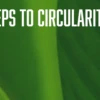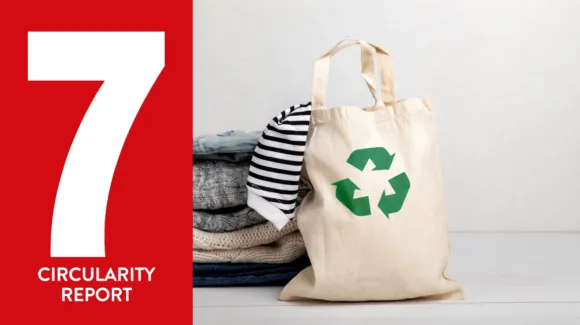In this year’s report, we’ve seen many examples of why taking an ‘ecosystem’ approach is essential to making consistent progress on circularity. Quite simply, whether you’re calculating the life-cycle impact of materials or reducing waste in the returns process, the broader your perspective, the more effective you can be – ensuring benefits for more stakeholders. But the truth is that no matter how comprehensive your solutions are, you can’t achieve lasting change without a critical mass of adoption by fashion customers.
And there is encouraging progress on this front throughout the fashion industry. According to the latest ThredUp Resale report, two in five apparel items bought in the last 12 months were second-hand. And by 2028, the global second-hand market will be worth $350 billion. But there is still significant progress to be made. The global shift away from take-make-dispose business models in the fashion industry must be underpinned by a continual behavioural shift on the part of shoppers. And experience shows that patterns of behaviour are much more difficult to change than suppliers or processes.
Difficult, but not impossible. New ideas are only novel until they become commonplace and we start to take them for granted. And there’s a lot we can do to speed up this process so that ideas like circularity become second nature for more people. One such example is the institution of breakfast. Many of us take it for granted that breakfast is ‘the most important meal of the day’. But this assumption is, in fact, the brainchild of advertising and public relations experts. So, how did they change perceptions so successfully?
Quite simply, they made breakfast about more than just sustenance. For example, early General Mills adverts encouraged Americans to ‘Eat a good breakfast, do a better job’, linking the supposed health benefits of cereal to improved performance at work. Likewise, PR guru Edward Bernays played on anxieties around wellbeing to position bacon and eggs as the ideal way to start the day. In short, changing behaviours starts with examining people’s motivations and exploring how we can meet these ‘core needs’.
Similarly, how we position circularity needs to accurately reflect people’s core motivations. The importance of this is underlined in a 2023 paper by the Merz Institute, which argues that to address the climate crisis, we must treat it as a ‘Human Behavioural Crisis’. An illustration of this principle is a classic urban planning problem. A motorway is constantly congested, so the authorities carry out expensive roadworks to add an extra lane in each direction. This reduces congestion temporarily, but after a few months it’s just as gridlocked as before because people’s core motivation didn’t change – they still need to get from A to B. Applying ‘ecosystem thinking’ is essential to solving the problem by addressing the core motivation differently, e.g. by providing better public transport.
Therefore, when it comes to making circularity second nature, we’ve got to think holistically about how it responds to people’s ‘core motivations’ – whether it’s a desire to stand out, budget considerations or concern for the planet. And we’ll need to ensure that circular solutions meet these needs as effectively as possible, by matching the right consumer with the right circular model. To make an impact in the long term, circularity must move at the speed of commerce. Change won’t happen overnight. But it can only happen if we respect the driving forces of the fashion ecosystem in which we operate.
2024 resale market and Consumer Trend Report (2024) ThredUp. Available at: https://www.thredup.com/resale?srsltid=AfmBOopZBk4akoewil040JVIHzZqdiTfkIYhvv_pwZ_HekMro7w2dQNd (Accessed: 07 January 2025).
2024 resale market and Consumer Trend Report (2024) ThredUp. Available at: https://www.thredup.com/resale?srsltid=AfmBOopZBk4akoewil040JVIHzZqdiTfkIYhvv_pwZ_HekMro7w2dQNd (Accessed: 07 January 2025).
Merz JJ, Barnard P, Rees WE, et al. World scientists’ warning: The behavioural crisis driving ecological overshoot. Science Progress. 2023;106(3). doi:10.1177/00368504231201372












